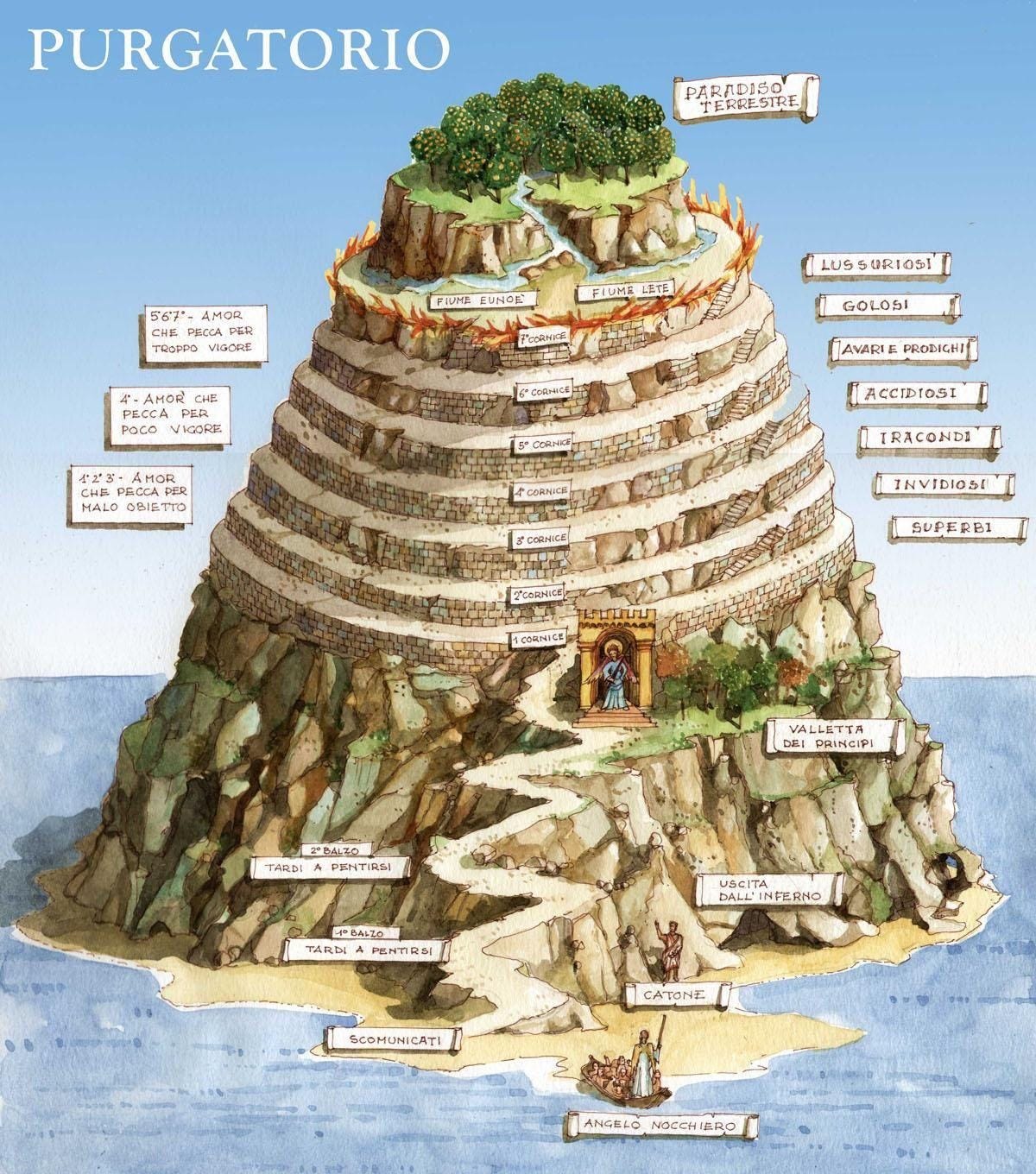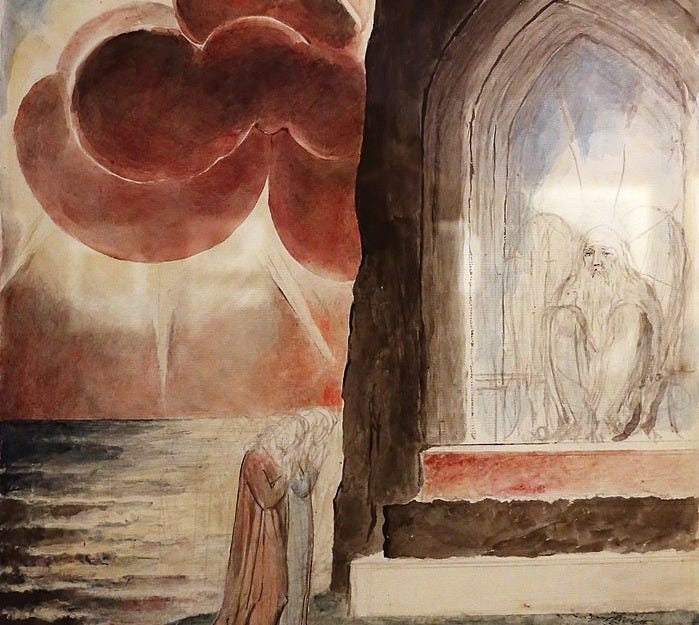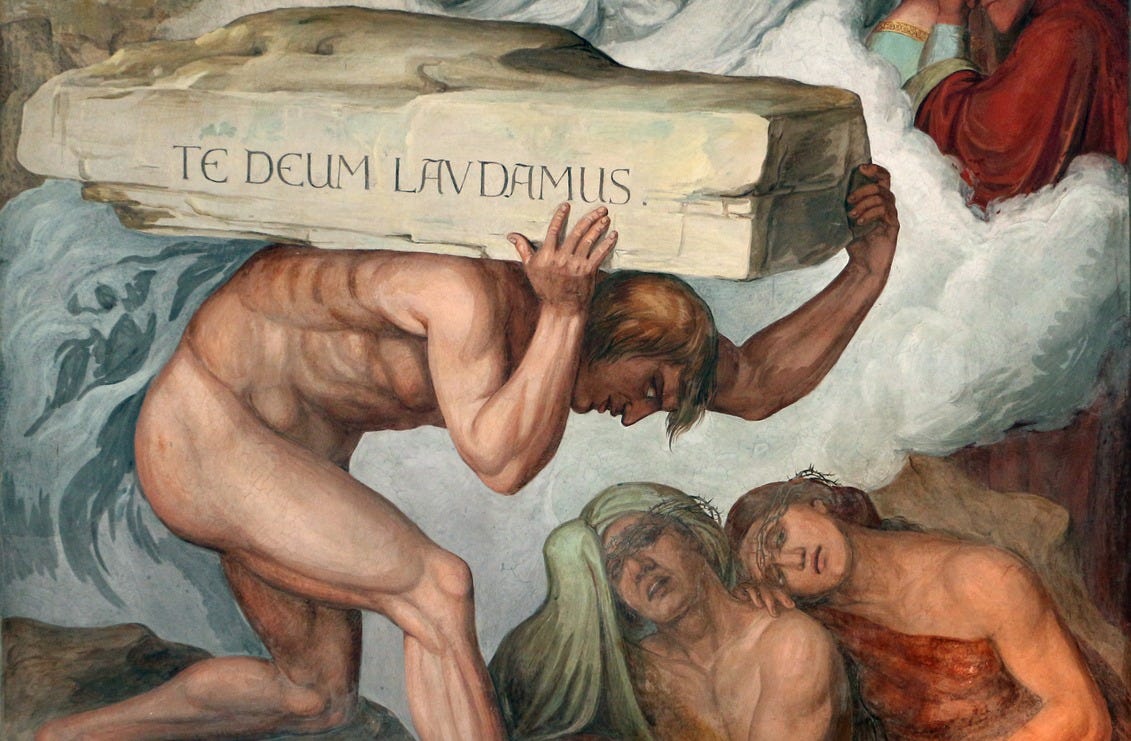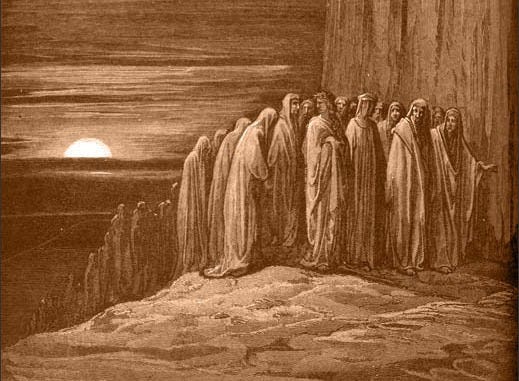The Best Self-Help Book in History
A guide to Dante’s Purgatory
Previously we explored Dante’s Inferno, the first canticle of his three-part Divine Comedy. While Inferno is certainly the most popular of the three, the other two, Purgatorio and Paradiso, are just as insightful.
Purgatorio is particularly fascinating. It begins with Dante emerging from the depths of Hell and casting his eyes on Mount Purgatory: a mountain composed of 10 terraces, with the middle seven corresponding to each of the seven deadly sins. As Dante climbs it, he metaphorically gets purged of each sin, and on each terrace learns a lesson about virtue and vice that is essential for spiritual salvation.
These lessons on salvation, however, are just as applicable as archetypes of self-improvement. For example, the climb is most difficult at the lower terraces, but becomes easier as you ascend — personal development, much like climbing a mountain, becomes more manageable as one practices new habits of virtue.
Whether you approach Purgatorio from a spiritual or secular perspective, the canticle is a rich fount of insight. Here’s what it reveals about self-development, and how the archetypes Dante uncovers can help you on your own journey…
The Structure of Mount Purgatory
The mountain of Purgatory is composed of 10 terraces: one “pre-Purgatory” terrace at the bottom, then seven corresponding to the seven deadly sins, and two final terraces where the Earthly Paradise is found.
The terraces corresponding to the seven deadly sins are split into three categories: sins of perverted love, deficient love, and misdirected love. The first three deadly sins of pride, envy, and wrath constitute perverted love, acedia (sloth) constitutes deficient love, and finally greed, gluttony, and lust constitute misdirected love.
Because the mountain is hardest to climb at the lower terraces, there’s already a lesson here: overcoming pride is the key to overcoming all other vices. Only by first overcoming pride can you begin to overcome envy, only by overcoming envy can you overcome wrath, and so on and so forth.
Pre-Purgatory
Setting out on their journey, Dante and his guide Virgil first encounter souls waiting at the base of the mountain. These are people who were excommunicated by the Church or were late to repent in life (and did so at the last minute). Before they can enter Purgatory, they must wait here for a time corresponding to their transgression — for the late-repentant, the waiting time is equal to their entire lives on Earth.
Once this is over, souls pass through the Gate of Purgatory, opened by an angel wielding the keys given to Saint Peter by Christ.
There’s not one key, but two: a silver key representing the sinner’s remorse, and a gold one representing God’s grace. If the soul approaching is not truly sincere in his contrition, his key will not turn…
The Terraces of Perverted Love:
1. Pride
The first level of Purgatory proper is where you must conquer pride. In Dante’s depiction, souls on this terrace carry heavy boulders, symbolizing how pride weighs individuals down and impedes progress.
This imagery illustrates the dual consequences of pride: it not only slows down personal achievements, but the colossal size of a boulder also (literally and metaphorically) blinds individuals to self-awareness and the broader perspective necessary for growth.
As for practical approaches to overcoming pride, Dante suggests a focus on its opposite and corresponding virtue: humility. By using the example of a prideful soul who, in the very midst of saying something prideful, stops himself and redirects course, Dante emphasizes the importance of self-awareness and vigilance in remedying the sin of pride.
2. Envy
On the next terrace of Purgatory, Dante encounters the souls of the envious. To be clear, envy extends beyond mere covetousness — it is an intense resentment towards others for possessing things one does not have.
How do you cure envy? Souls on this terrace have their eyes sewn shut — the cure is a fixed focus inward rather than on external desires, and the triumph of self-reflection over external comparison.
Dante suggests that the opposite and corresponding virtue to envy is generosity, and makes clear that by becoming more generous, one can better overcome it.
3. Wrath
The final terrace in the grouping of perverted love is for wrath. Dante defines wrath not as mere anger, but as a defensive, harmful reaction characterized by blindness and disorientation, which prevents individuals from seeing the bigger picture in life situations.
The souls on this terrace are depicted wandering blindly in acrid smoke, symbolizing the blinding rage that wrath induces, and again echoing the themes of blindness associated with the previous sins of pride and envy. The corresponding virtue to wrath is gentleness, and as souls depart the terrace of wrath a Beatitude is proclaimed: "Blessed are the peacemakers."
Dante highlights the importance of calm-headedness and non-escalation as means of overcoming wrath, and consequently continuing one’s journey up the mountain of Purgatory.
The Terrace of Deficient Love:
4. Acedia
Next are those who failed in life to take action in the pursuit of love. Acedia, commonly known as sloth, is distinct from mere laziness: it is instead a profound indifference and lack of care about beauty, morality, and action. Acedia has both societal and personal repercussions.
On a societal level, acedia manifests as indifference to justice and communal responsibilities. On a personal level, it results in a life characterized by a lack of excitement, joy, and wonder, which often leads to depression.
Zeal is the opposite and corresponding virtue to acedia, and on this terrace souls are made to observe depictions of passionate, zealous individuals: The Virgin Mary is depicted joyfully proclaiming the Magnificat, and Dante also provides examples from the life of Julius Caesar.
The cure to acedia, then, seems to be rooted in taking inspiration from others: Dante highlights the necessity of looking to the greats who have before, who you can learn from and be inspired by their zeal for life.









